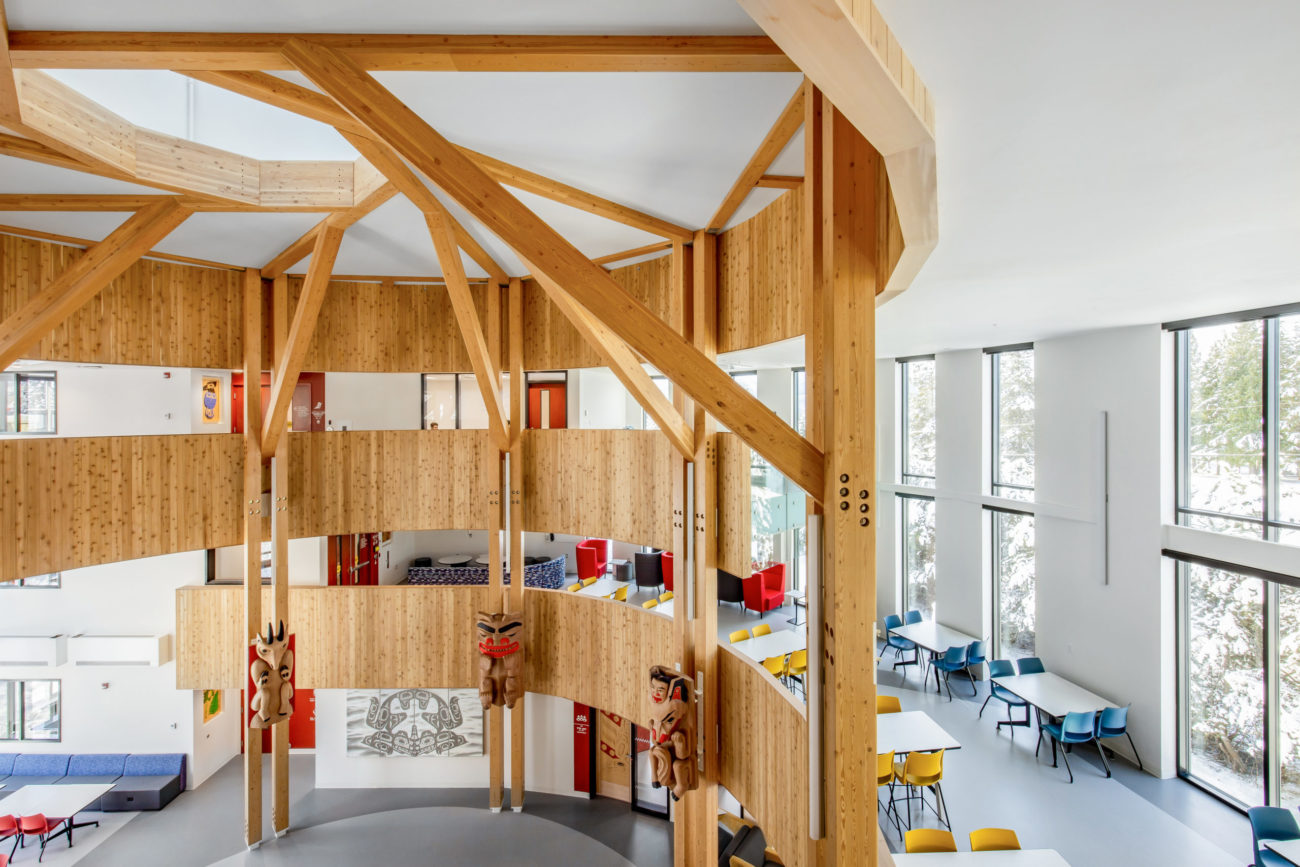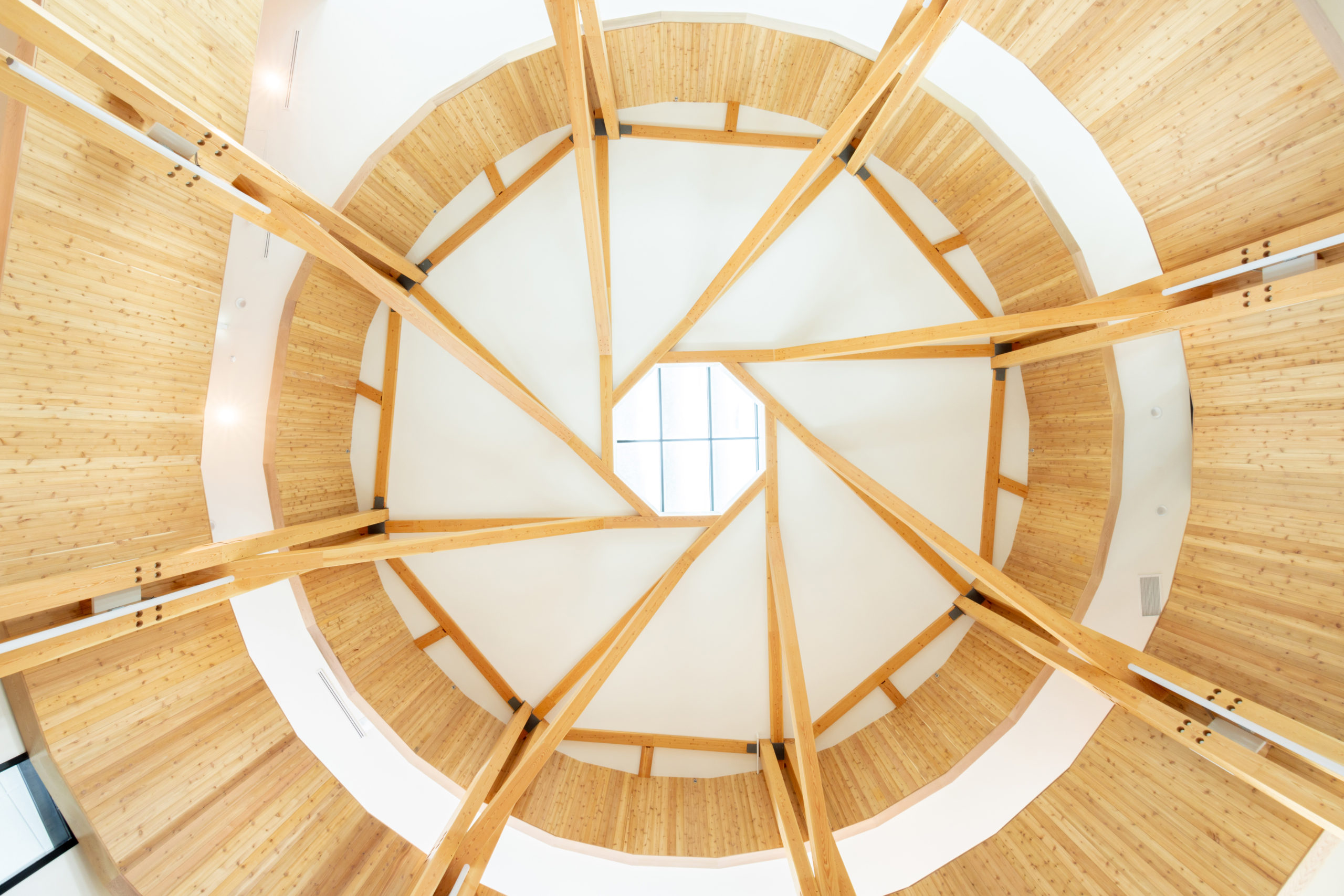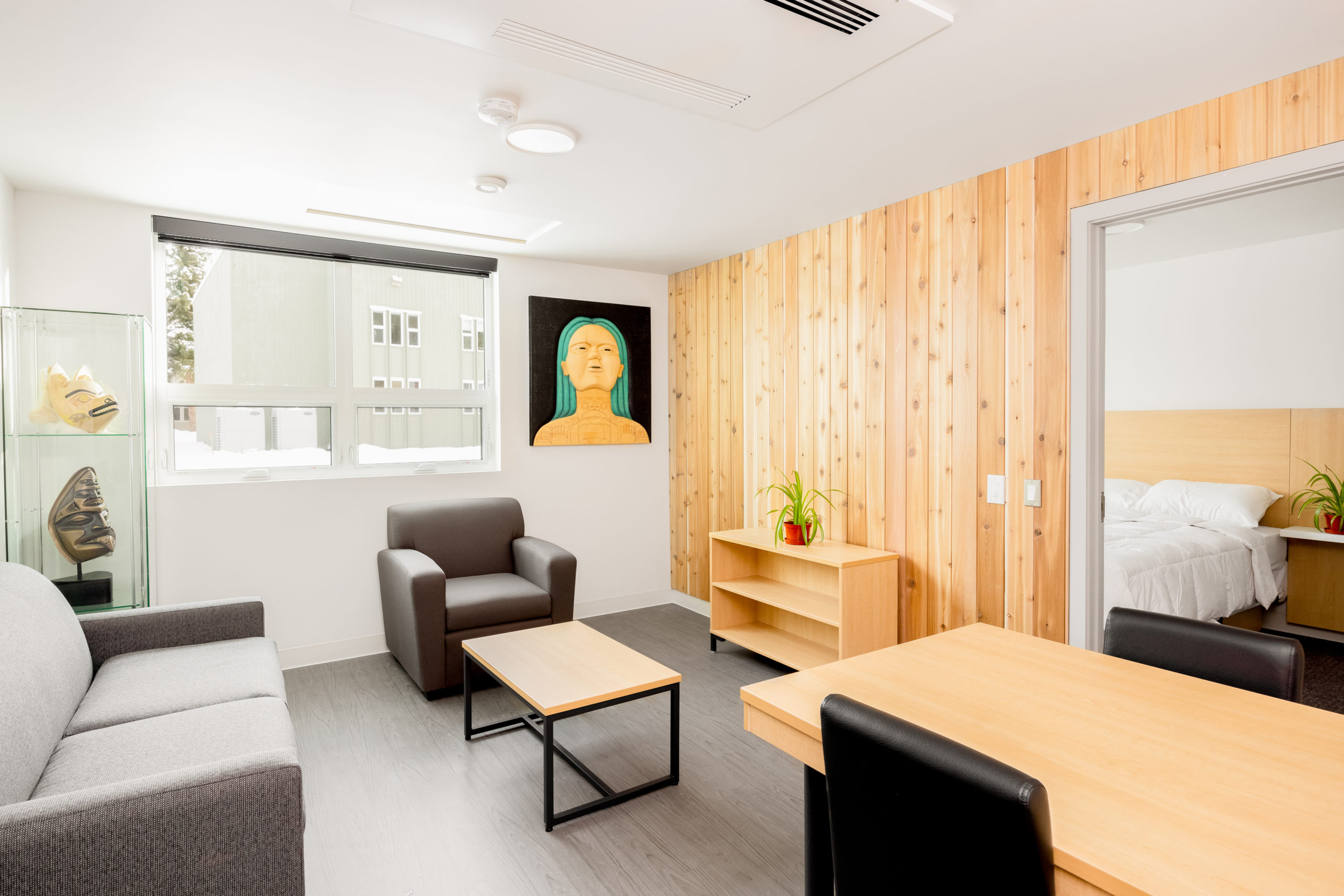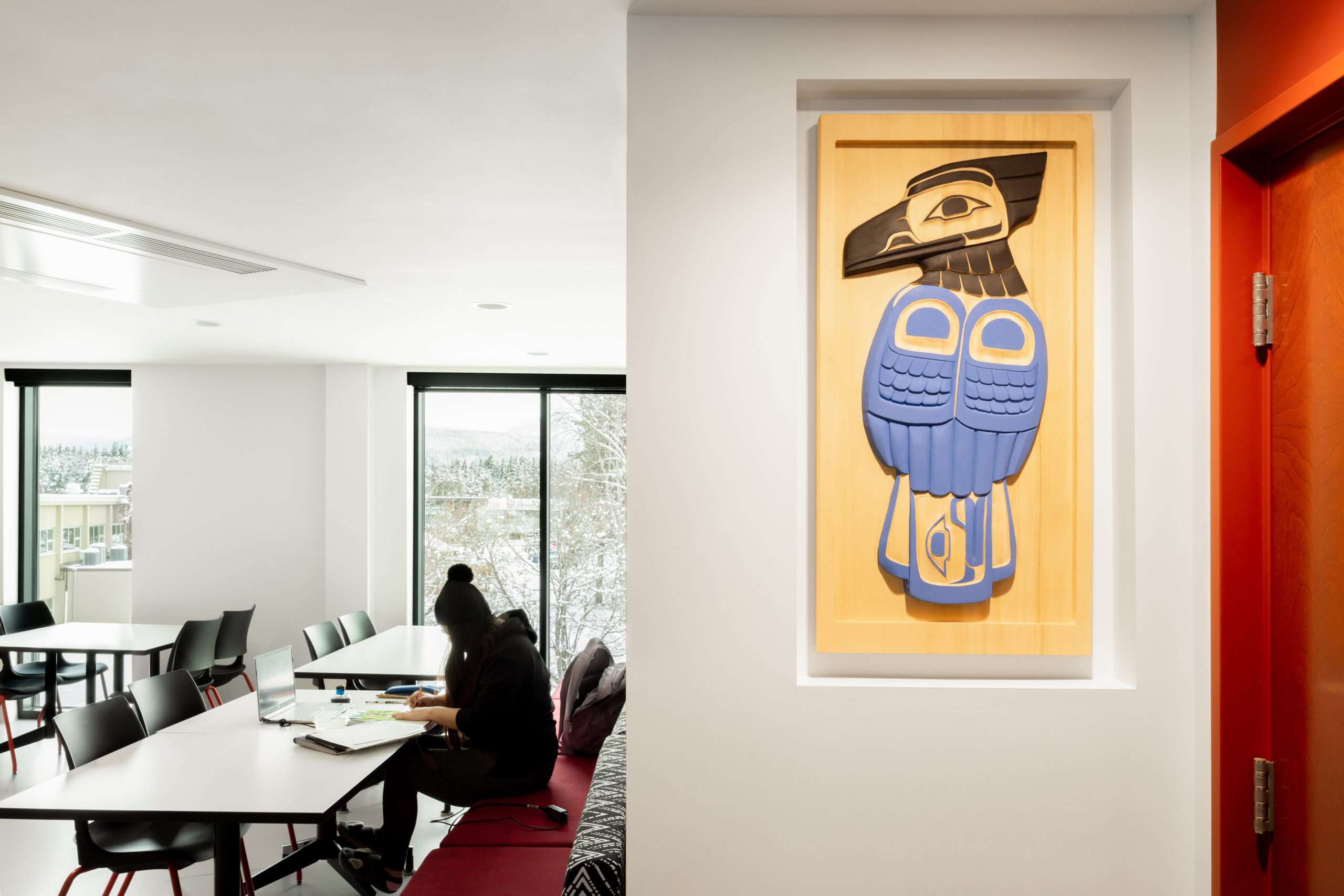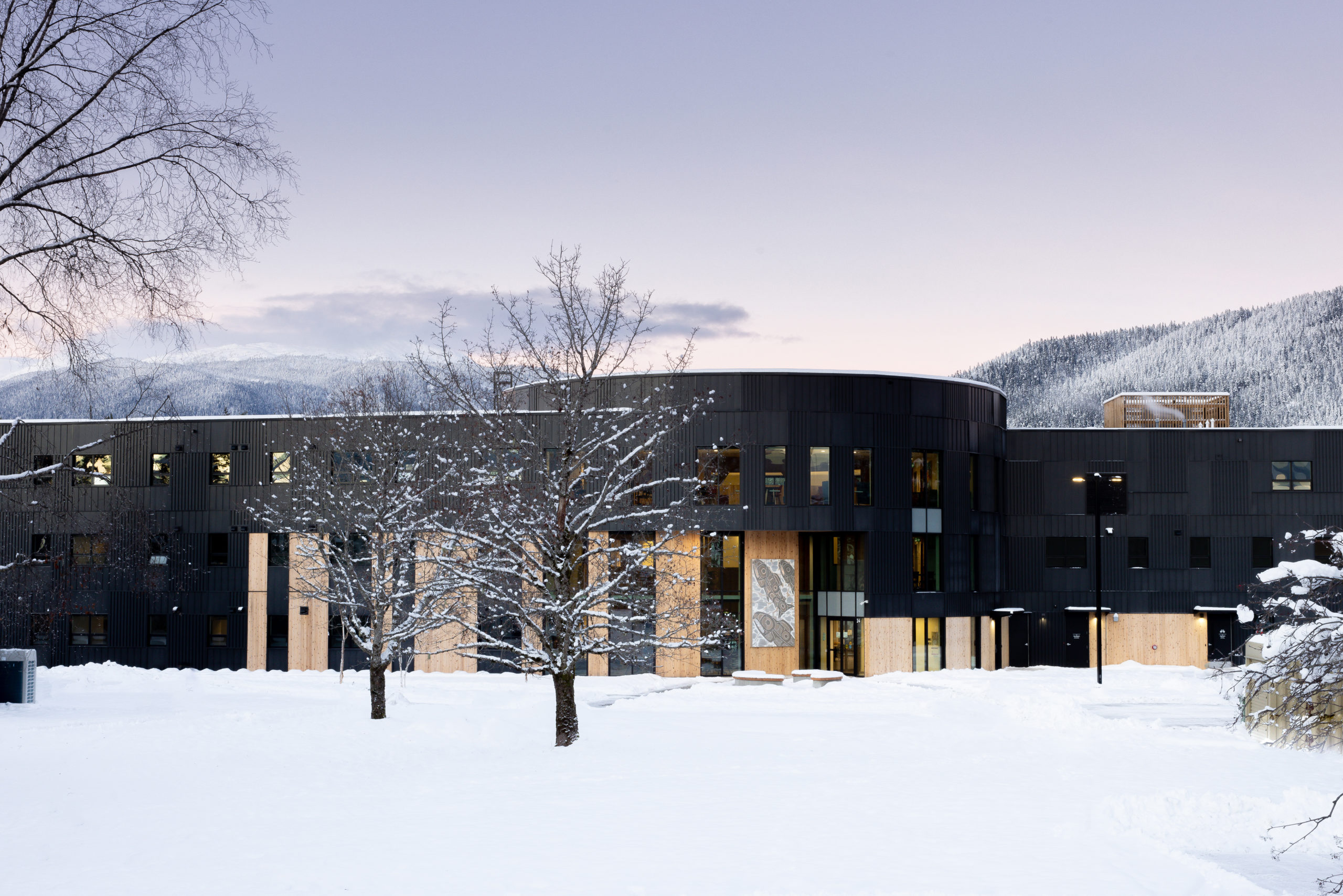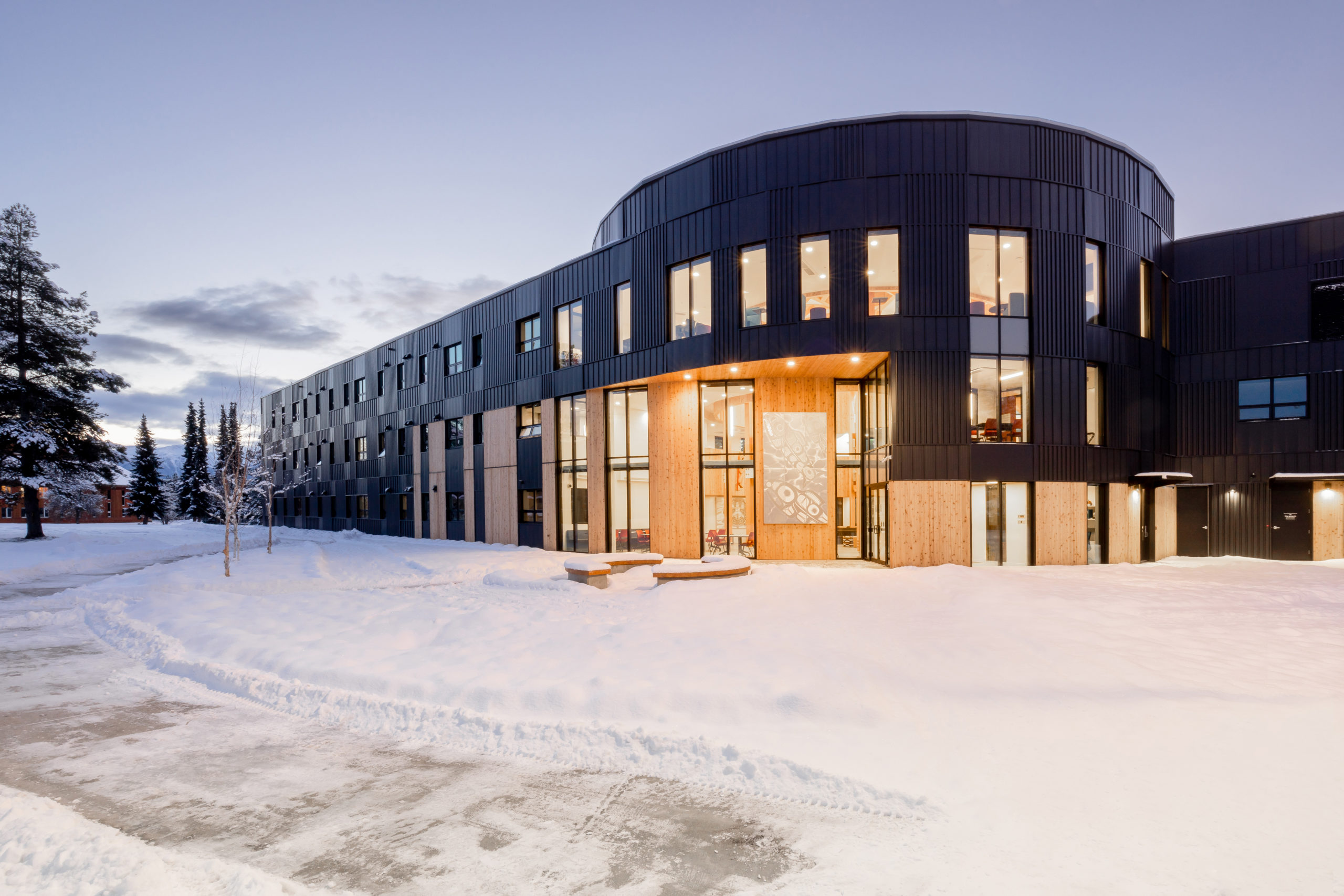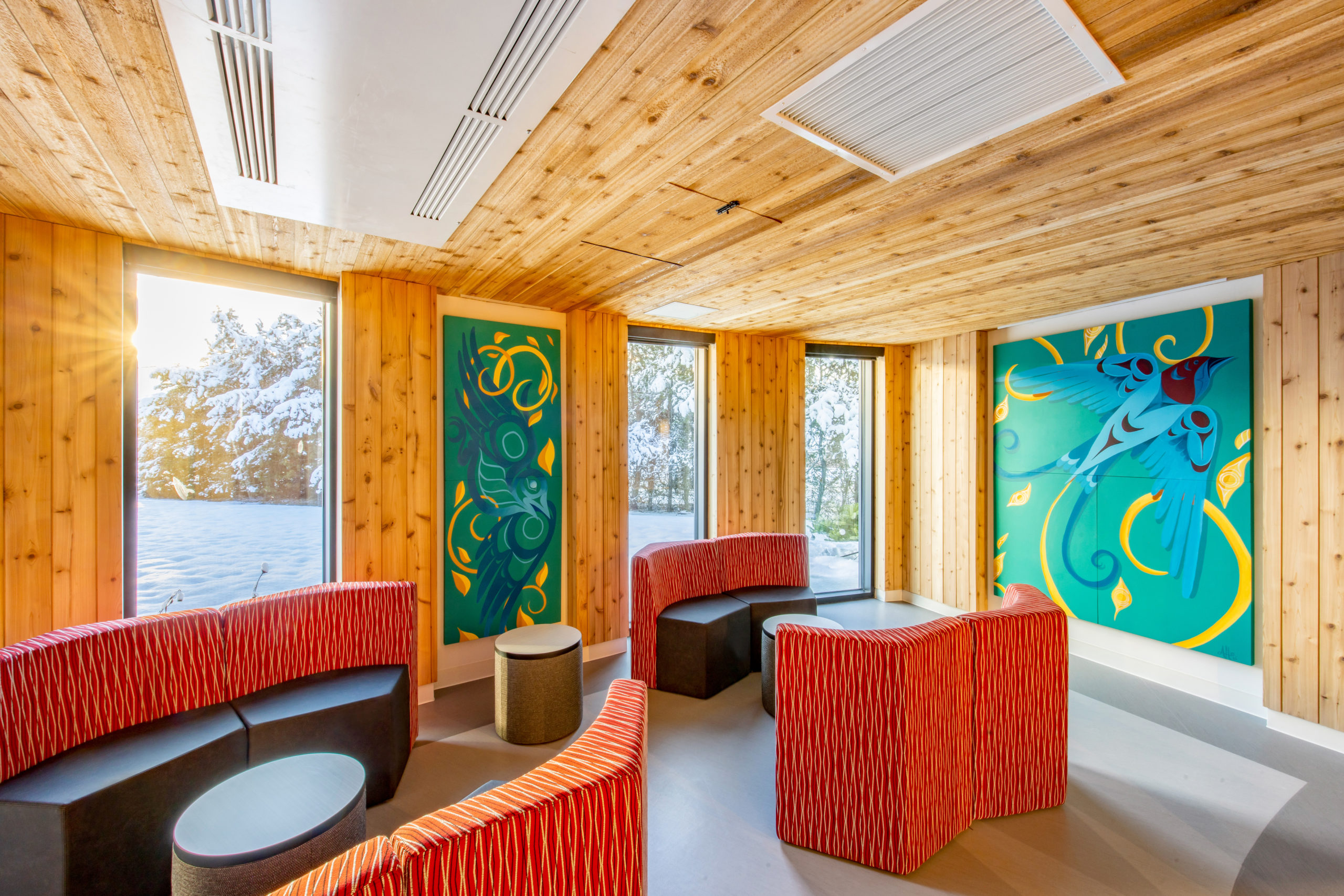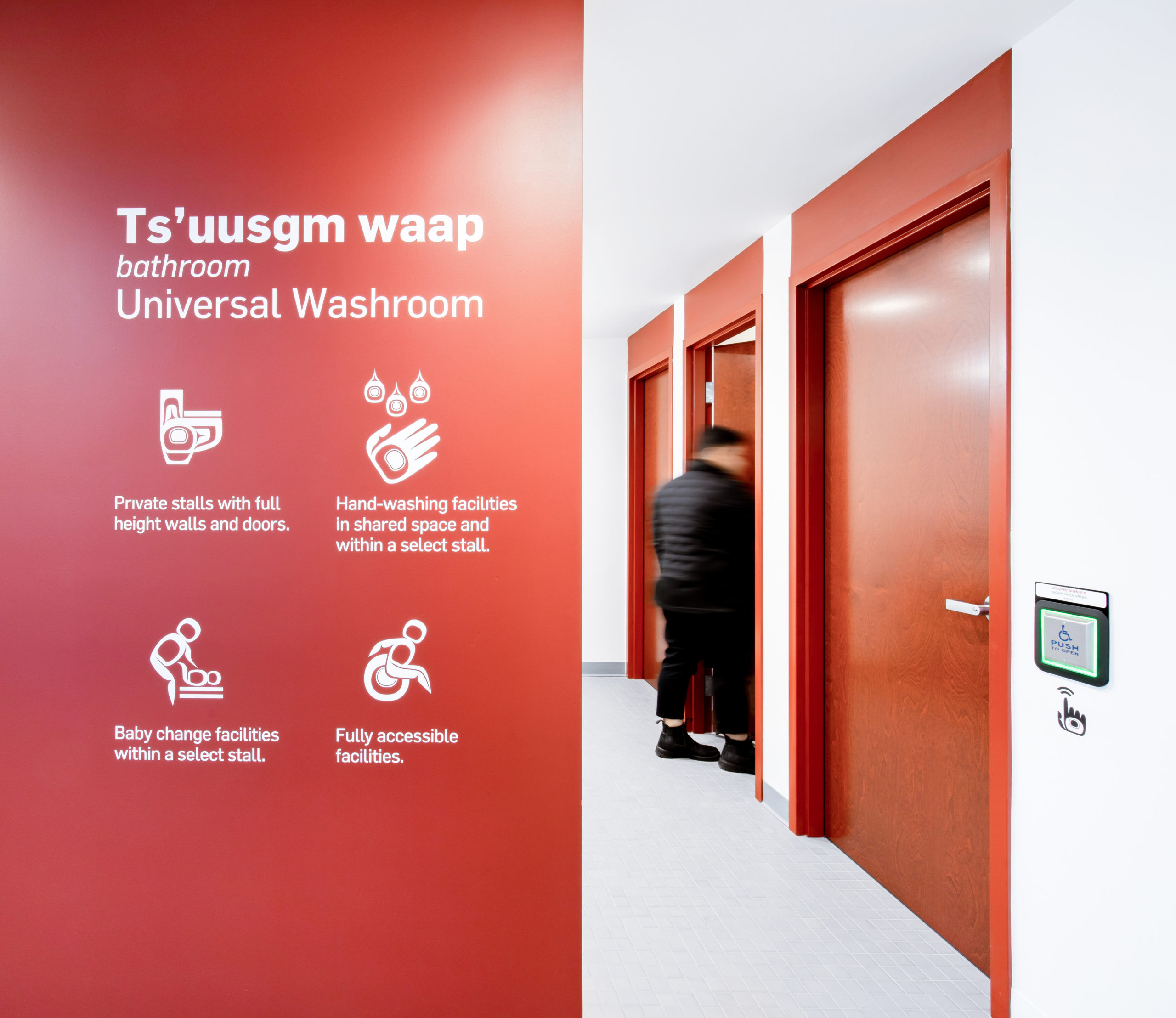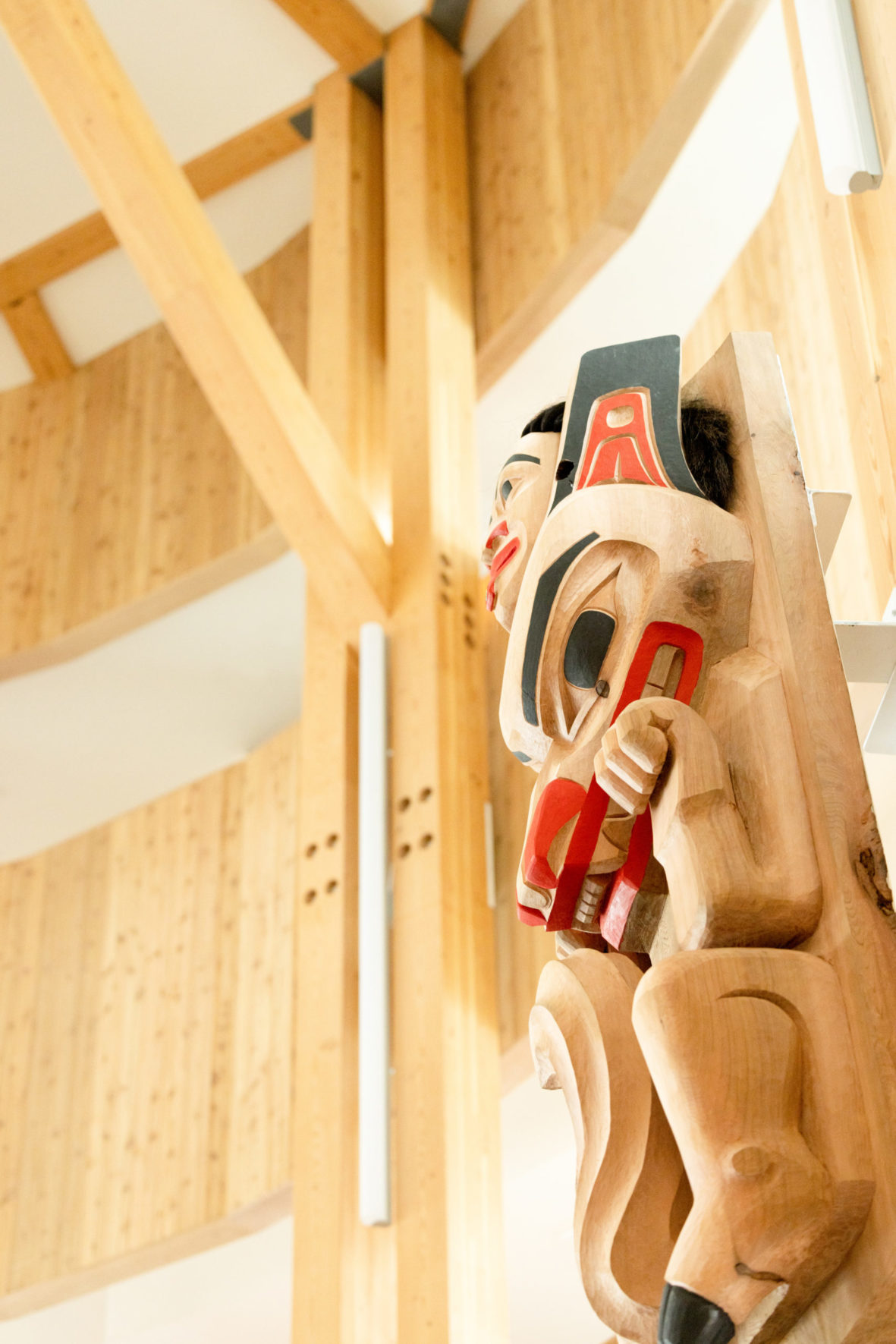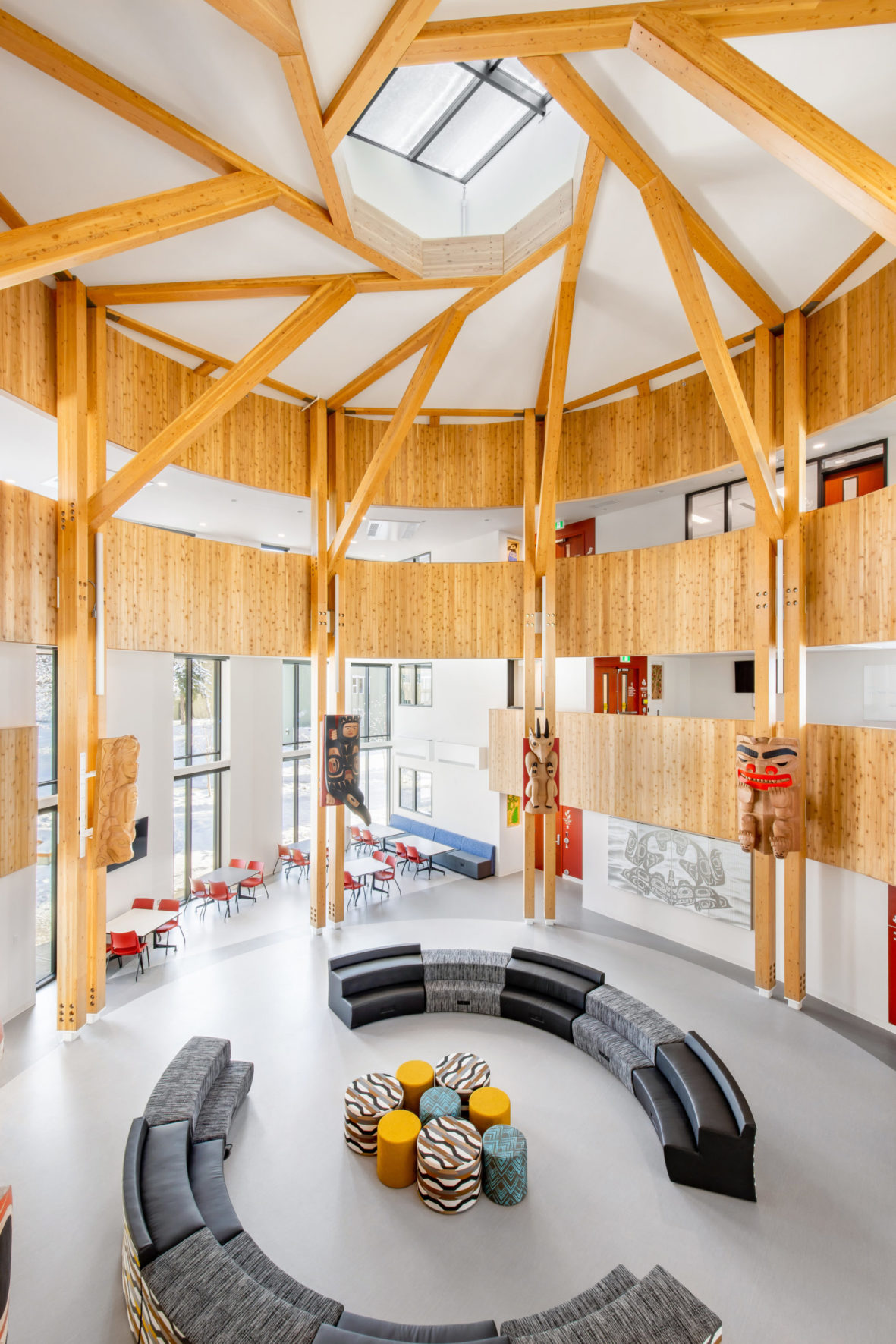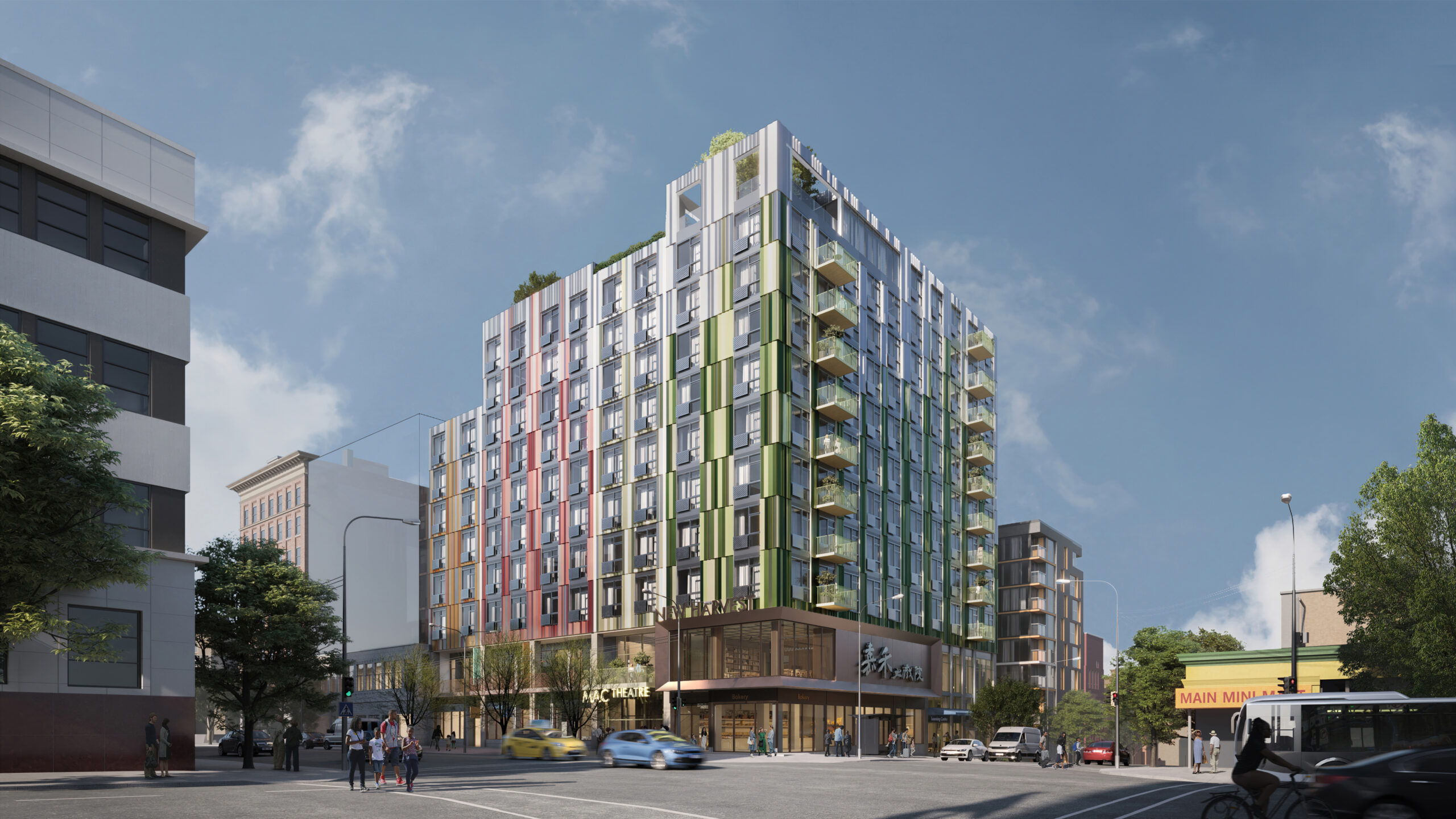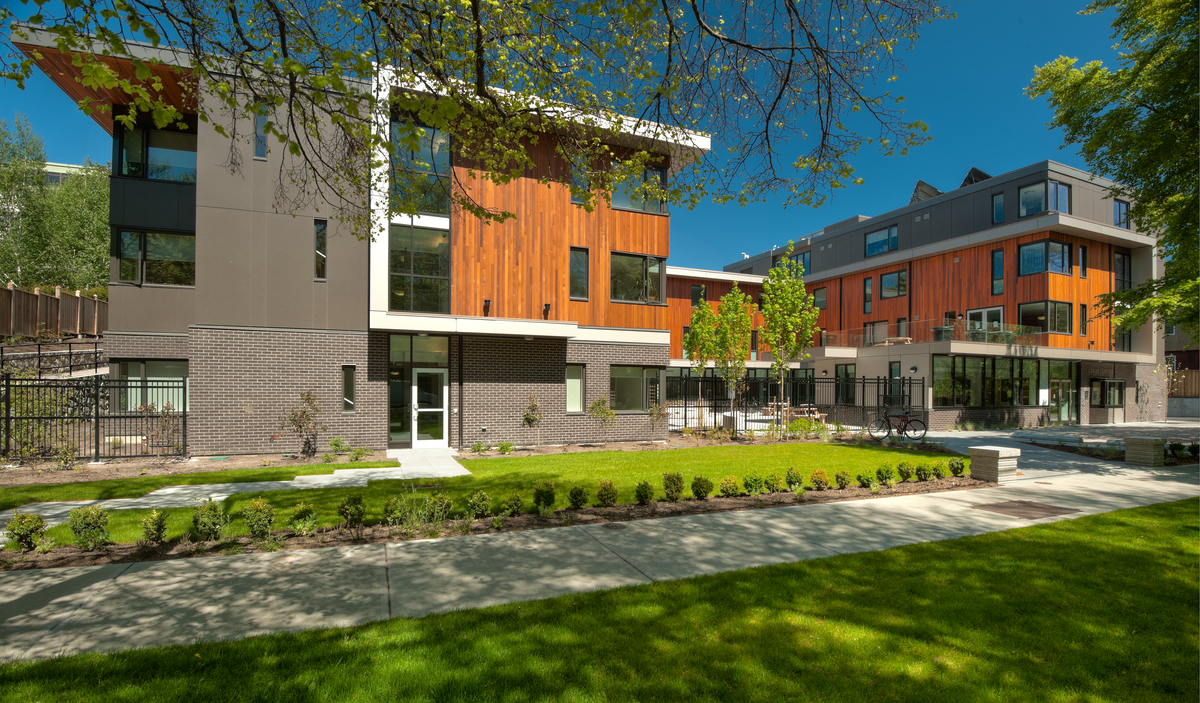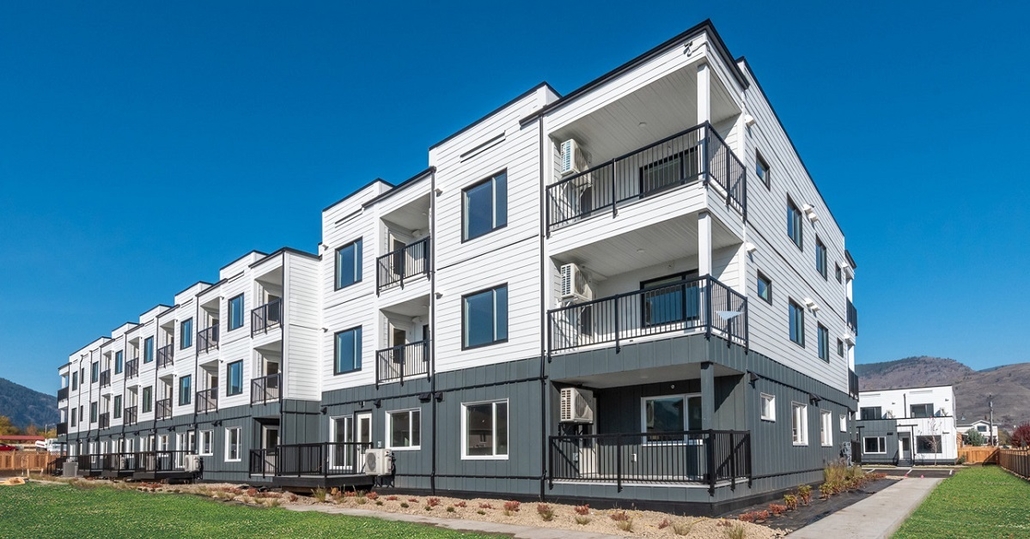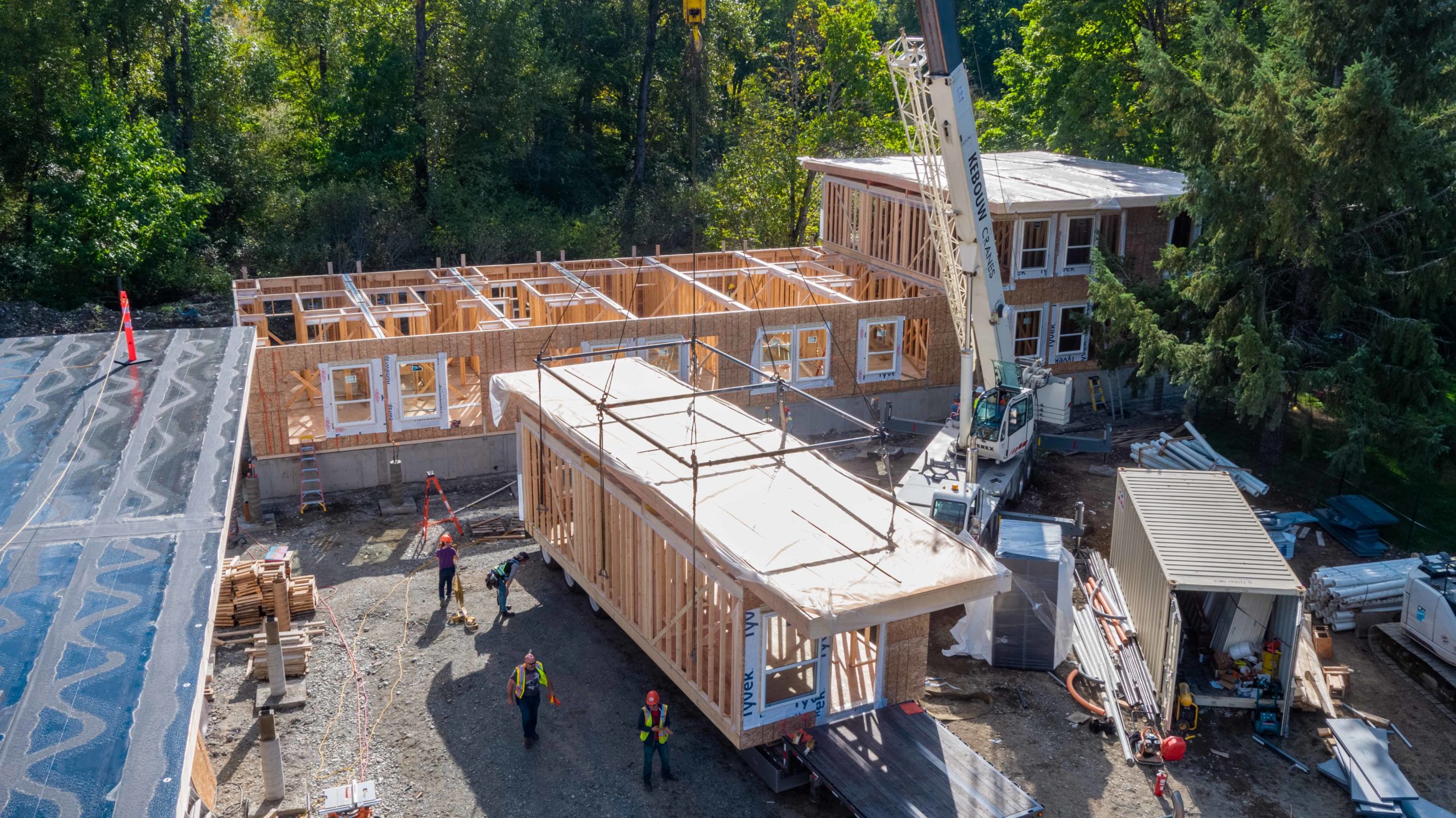Timber technology and tradition unite
The Wii Gyemsiga Siwilaawksat Student Housing project features B.C.-sourced western red cedar cladding, a Douglas-fir glue-laminated timber (glulam) pin-wheel structure, modular light-frame wood construction, Indigenous art installations and a novel signage and wayfinding program that embraces Sm’algyax—the local First Nations language where the building resides.
- Seamlessly blends light-frame modular and mass timber construction, featuring a unique exterior metal and cedar-clad weaving pattern.
- Takes advantage of acoustic and thermal benefits of modular wood construction—with energy efficiency exceeding Step 4 of the BC Energy Step Code.
- Showcases 70 different Indigenous art installations representing the Northwest Coast region and the First Nations communities the College serves.
- Indigenized approach offers students a safe, inclusive living space.
Indigenized approach offers students a safe, inclusive living space
The Wii Gyemsiga Siwilaawksat Student Housing design embraced an indigenized approach and included broad stakeholder input throughout to provide students with a safe, inclusive living space reflective of local Indigenous culture. The project features B.C.-sourced western red cedar cladding, a Douglas-fir glue-laminated timber (glulam) pin-wheel structure and modular light-frame wood construction.
The three-storey, modular light-frame building replaces 40-year-old-student housing and provides 108 student beds, two hotel suites, an elder suite, six shared kitchens, two collaboration areas, a computer lab, an esports room, a maker space and bike storage.
The facility embraces the latest in student housing trends, including a design that draws residents out of their rooms and into social community-building spaces. Central to its design is a large light-filled atrium that offers a safe space for knowledge sharing and cultural practice. It includes a decorative carved door and appropriate ventilation for smudging. The maker space allows students to integrate art and craft into their day-to-day lives.
The campus sits on the traditional territory of the Tsimshian Kitsumkalum people, serving six different Nations—Haida, Haisla, Nisga’a, Wet’suwet’en, Gitxsan, Tsimshian and 21 distinct First Nation communities. The building’s name, Wii Gyemsiga Siwilaawksat, translates from the local First Nations language Sm’algyax into English as, “where learners are content and comfortable”.
Energy-efficient facility seamlessly blends modular light-frame wood and mass timber construction
Wii Gyemsiga Siwilaawksat’s housing integrates 36 prefabricated light-frame wood modules, with each one built off-site to enable faster delivery times and an energy-efficient airtight design. The core structure, featuring a glulam pin-wheel design, was site-built and seamlessly dovetails with the modular light-frame wood construction. Its mass timber component includes a central oculus where the Douglas-fir glulam posts meet—a feature that takes cues from traditional First Nations structures where natural ventilation would provide a way for heat to escape.
The building’s energy-efficient design takes full advantage of the thermal benefits of prefabricated timber construction. The building meets British Columbia Energy Step Code 4 and includes an air-tight design, increased insulation and triple-pane glazing.
Modern integration of First Nation traditions and language
Inspired by the cedar tree—a sacred symbol integral to local First Nations’ culture—the building features exterior western red cedar and metal cladding in a distinctive Tsimshian weaving pattern. This symbolizes the bark of an old-growth cedar tree, while inside, a cedar-clad central lobby—akin to a hollow cedar tree, or heartwood—offers a light-filled multipurpose space for gatherings and traditional ceremonies.
Through collaboration with local Indigenous artists, the facility showcases 70 different Indigenous art installations representing the Northwest Coast region and the First Nations communities the College serves. To revitalize and strengthen Sm’algyax—the local First Nations language—two Tsimshian territory holders (Sm’ooygit Wudi Waye and Sigidm hanaa’na̱x ‘Xbisuunt) and Kitsumkalum Elders translated the building’s signage into Sm’algyax. The building’s Sm’algyax signage was translated by Sharon and Emily Bryant (mother and daughter) whose Tsimshian names are Litamlaxdau Gibau and Dm Syl Haatyk Gibau. Sharon is The Manager for Prevention and Culture Programs and Emily is the Language Coordinator for the Kitsumkalum First Nation. They both do a lot of work in the community with Sma’lgyax fluency amongst their members.
The combined cedar and metal cladding offers a seamless transition between the light-frame modular construction and the central mass timber-built core atrium, with the exterior cladding suggestive of the bark used in Tsimshian weaving. The modular wood design improves the acoustic performance and the facility’s design exceeds Step 4 of the BC Energy Step Code.
Karen Marler, Principal-in-Charge, hcma
